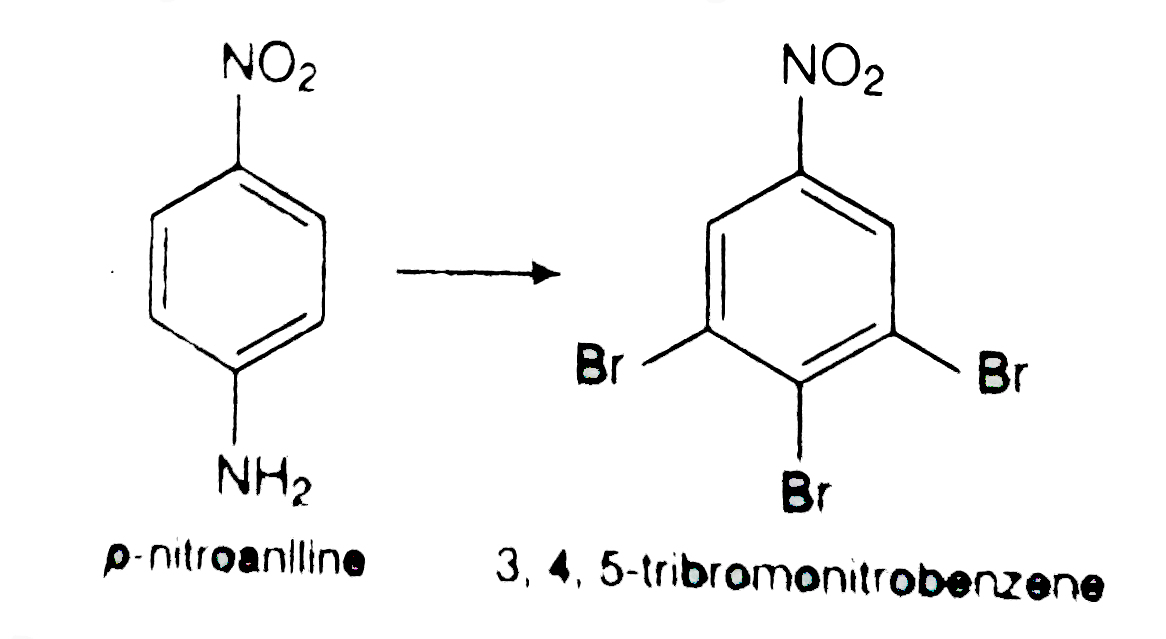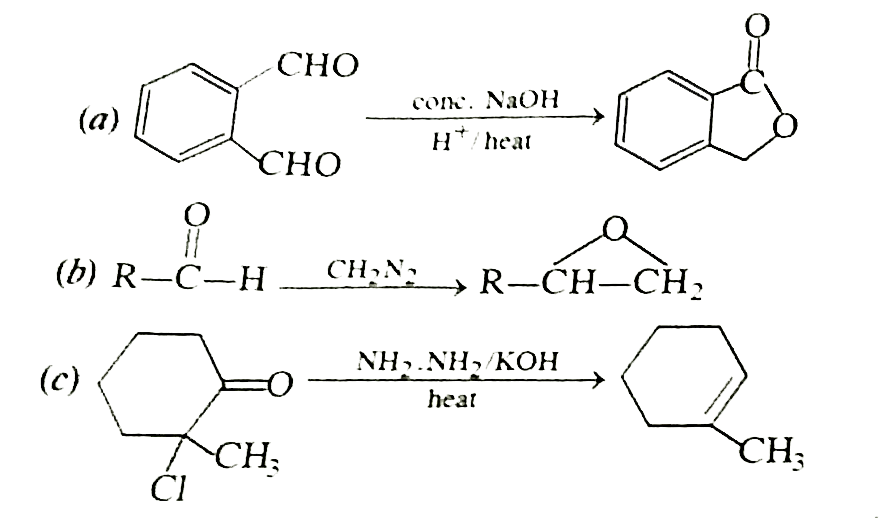How will you bring about the following conversions ?
Ethyl bromide to ethanamine
To convert ethyl bromide (C2H5Br) to ethanamine (C2H5NH2), we can follow these steps:
Step 1: Nucleophilic Substitution with Azide Ion
1. React ethyl bromide with sodium azide (NaN3):
- Ethyl bromide undergoes nucleophilic substitution (SN2 mechanism) where the bromine atom is replaced by an azide ion (N3^-).
- The reaction can be represented as:
C2H5Br+NaN3→C2H5N3+NaBr
- The product formed is ethyl azide (C2H5N3).
Step 2: Reduction of Ethyl Azide
2. Reduce ethyl azide to ethanamine:
- The ethyl azide is then reduced using lithium aluminium hydride (LiAlH4).
- The reduction reaction can be represented as:
C2H5N3+2(H)→C2H5NH2+N2
- This reaction converts the azide group into an amine group, yielding ethanamine (C2H5NH2).
Alternative Method: Direct Reaction with Ammonia
1. React ethyl bromide with ammonia (NH3):
- Ethyl bromide can also be reacted directly with ammonia, preferably in excess.
- The reaction can be represented as:
C2H5Br+NH3→C2H5NH2+HBr
- In this case, the excess ammonia helps to favor the formation of the primary amine (ethanamine) over secondary or tertiary amines.
Summary of Reactions
- Method 1: Ethyl bromide → Ethyl azide → Ethanamine
- Method 2: Ethyl bromide + Ammonia → Ethanamine
1. React ethyl bromide with sodium azide (NaN3):
- Ethyl bromide undergoes nucleophilic substitution (SN2 mechanism) where the bromine atom is replaced by an azide ion (N3^-).
- The reaction can be represented as:
C2H5Br+NaN3→C2H5N3+NaBr
- The product formed is ethyl azide (C2H5N3).
2. Reduce ethyl azide to ethanamine:
- The ethyl azide is then reduced using lithium aluminium hydride (LiAlH4).
- The reduction reaction can be represented as:
C2H5N3+2(H)→C2H5NH2+N2
- This reaction converts the azide group into an amine group, yielding ethanamine (C2H5NH2).
1. React ethyl bromide with ammonia (NH3):
- Ethyl bromide can also be reacted directly with ammonia, preferably in excess.
- The reaction can be represented as:
C2H5Br+NH3→C2H5NH2+HBr
- In this case, the excess ammonia helps to favor the formation of the primary amine (ethanamine) over secondary or tertiary amines.
- Method 1: Ethyl bromide → Ethyl azide → Ethanamine
- Method 2: Ethyl bromide + Ammonia → Ethanamine
Topper's Solved these Questions
- ORGANIC COMPOUNDS CONTAINING NITROGENBOOK - ICSECHAPTER - ORGANIC COMPOUNDS CONTAINING NITROGENEXERCISE - EXERCISE (PART-II DESCRIPTIVE QUESTIONS- LONG ANSWER QUESTIONS )
57 Videos
- ORGANIC COMPOUNDS CONTAINING NITROGENBOOK - ICSECHAPTER - ORGANIC COMPOUNDS CONTAINING NITROGENEXERCISE - ISC EXAMINATION QUESTIONS ( PART-I OBJECTIVE QUESTIONS)
7 Videos
- ORGANIC COMPOUNDS CONTAINING NITROGENBOOK - ICSECHAPTER - ORGANIC COMPOUNDS CONTAINING NITROGENEXERCISE - EXERCISE (PART-II DESCRIPTIVE QUESTIONS- VERY SHORT ANSWER QUESTIONS )
89 Videos
- ISC QUESTION PAPERBOOK - ICSECHAPTER - ISC QUESTION PAPEREXERCISE - PART-II(SECTION-B)
74 Videos
- P-BLOCK ELEMENTSBOOK - ICSECHAPTER - P-BLOCK ELEMENTSEXERCISE - SOURCE BASED QUESTIONS
10 Videos
Similar Questions
How will you bring out the following conversion?

View SolutionHow will you bring about the following changes :

View SolutionHow will you bring about the following conversions ?
Ethylamine to diethylamine
View SolutionHow will you bring about the following conversions ?
Methylamine to ethylamine.
View SolutionHow will you bring about the following conversion ? Diethyl ether to ethanol.
View SolutionHow will you bring out the following conversions ?
Ethyne to methane
View SolutionHow will you bring out the following conversions ?
Ethyne to ethane
View SolutionHow will you bring about the following conversions :
Methyl iodide to methyl ethyl ether
View SolutionHow will you bring about the following conversions?
Ethanol to ethanoic acid
View SolutionHow will you bring about the following conversions?
Acetic acid to ethane
View Solution
